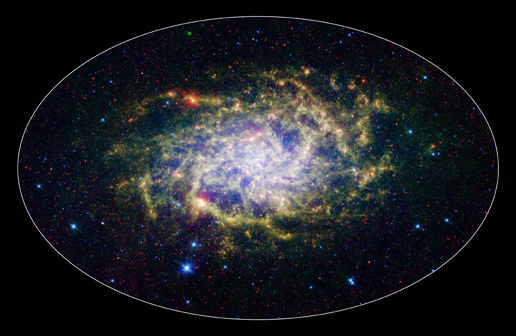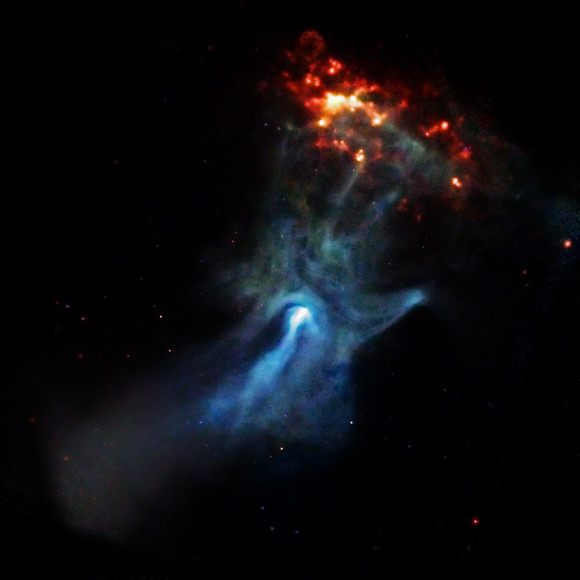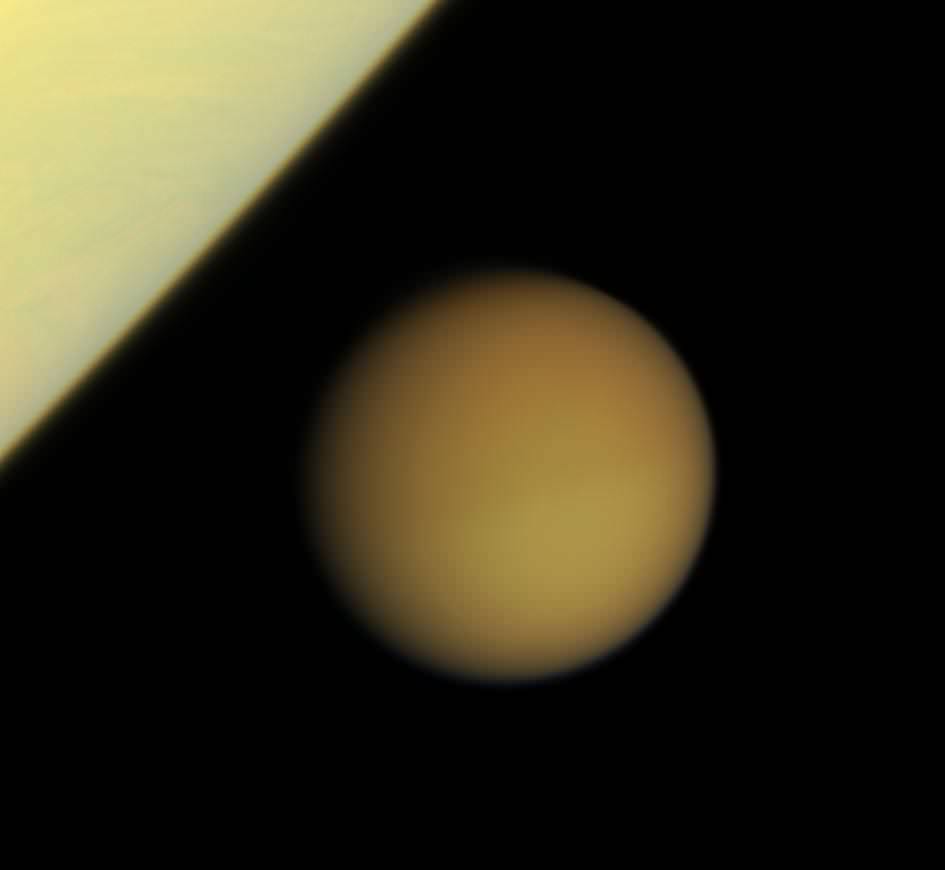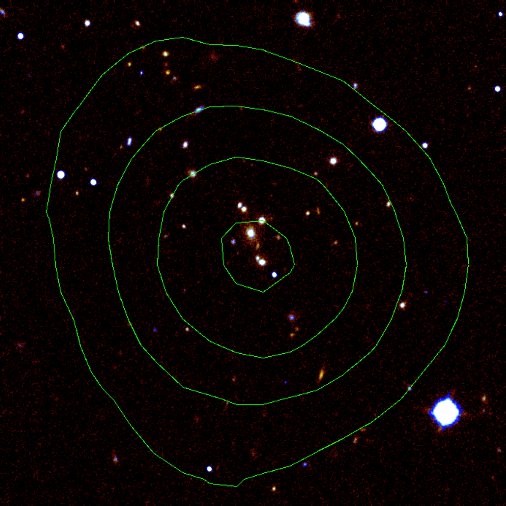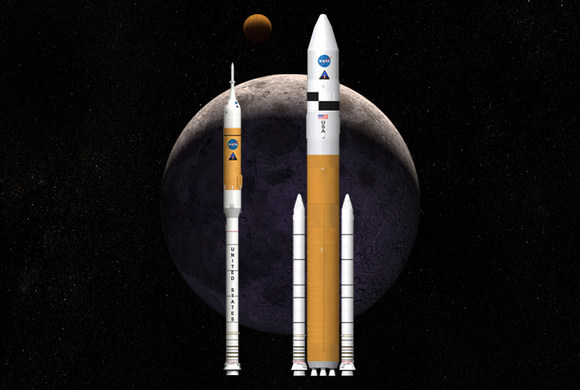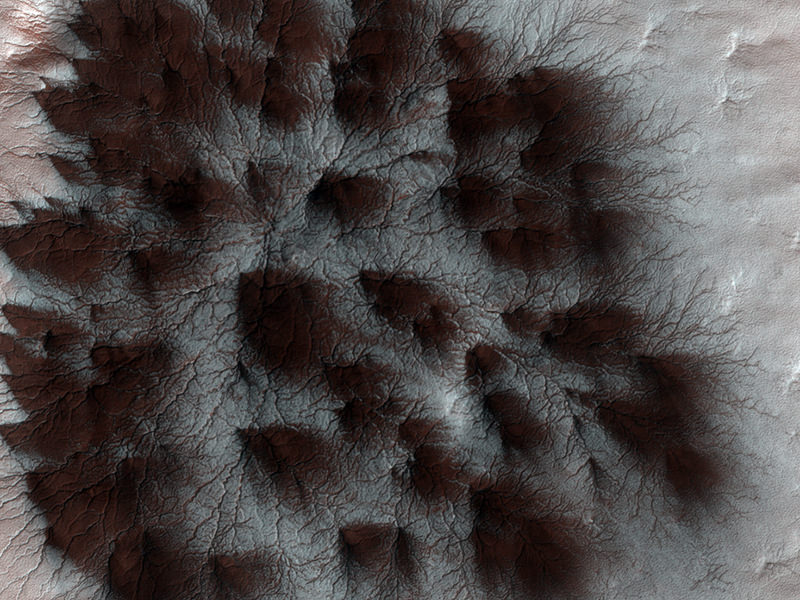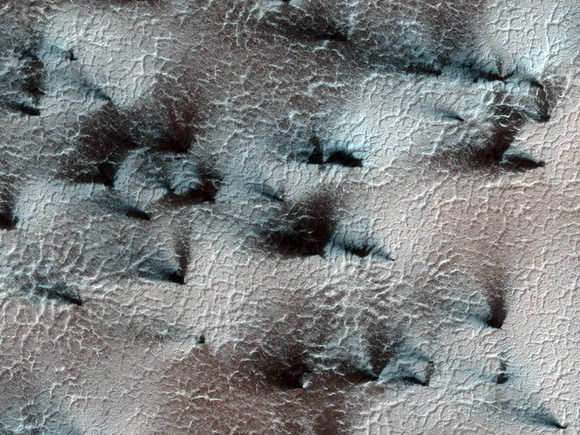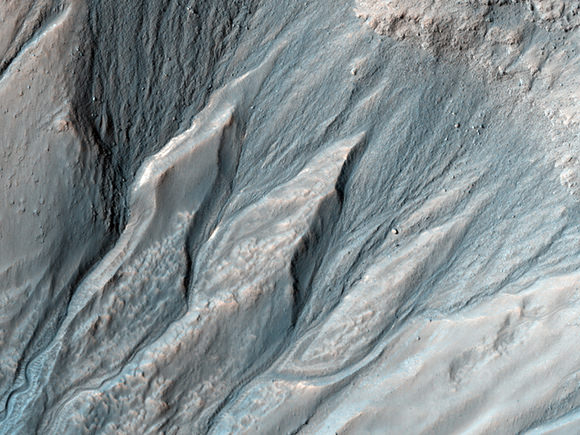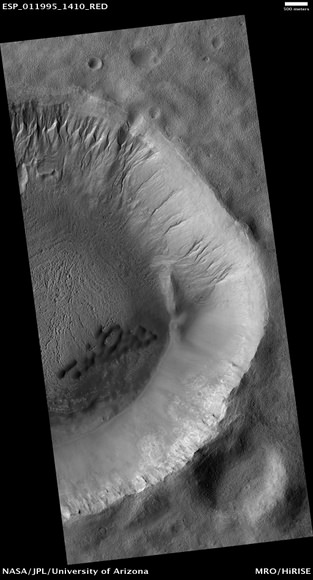[/caption]
NASA’s Spitzer Space Telescope has captured this new image of M33, also known as the Triangulum Galaxy, and released it as part of the “Around the World in 80 Telescopes” event for the International Year of Astronomy.
Besides the pretty colors, the new image reveals something else about M33: it’s more than meets the eye.
M33 is located about 2.9 million light-years away in the constellation Triangulum. It is a member of what’s known as our Local Group of galaxies. Along with our own Milky Way and Andromeda, the group of about 50 galaxies travels together in the universe, bound to one another by gravity. In fact, M33 is one of the few galaxies that is moving toward the Milky Way despite the fact that space is expanding, causing most galaxies in the universe to grow farther and farther apart.
The new image reveals M33 to be surprising large – bigger than its visible-light appearance would suggest. With its ability to detect cold, dark dust, Spitzer can see emission from cooler material well beyond the visible range of M33’s disk. Exactly how this cold material moved outward from the galaxy is still a mystery, but winds from giant stars or supernovas may be responsible.
The image is a three-color composite showing infrared observations from two of Spitzer instruments. Stars appear as glistening blue gems (several of which are actually foreground stars in our own galaxy), while dust rich in organic molecules glows green. The diffuse orange-red glowing areas indicate star-forming regions, while small red flecks outside the spiral disk of M33 are probably distant background galaxies.
As for the technical details, the blue parts of the image represents combined 3.6- and 4.5-micron light, and green shows light of 8 microns, both captured by Spitzer’s infrared array camera. Red is 24-micron light detected by Spitzer’s multiband imaging photometer.
Source: NASA’s Spitzer site

